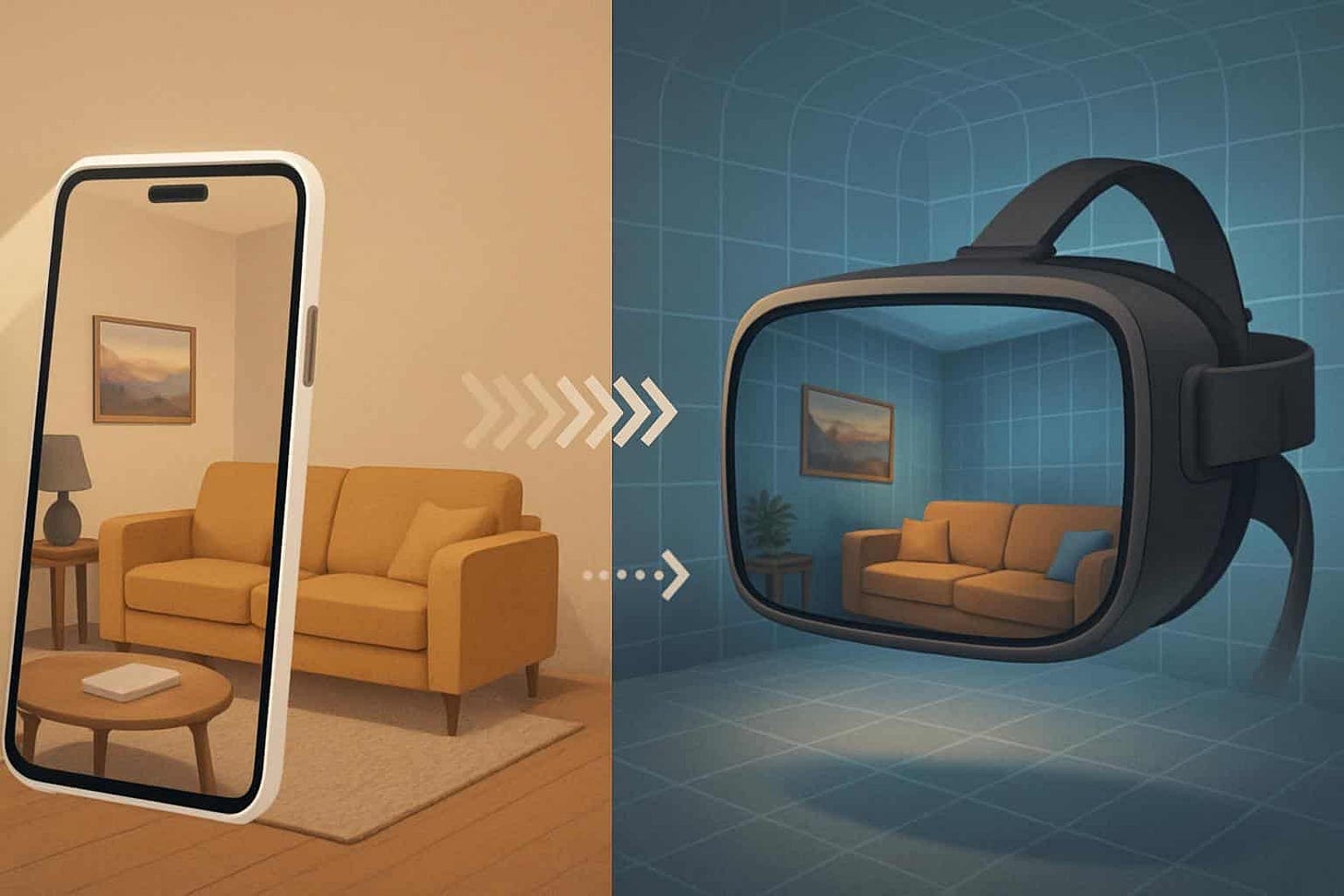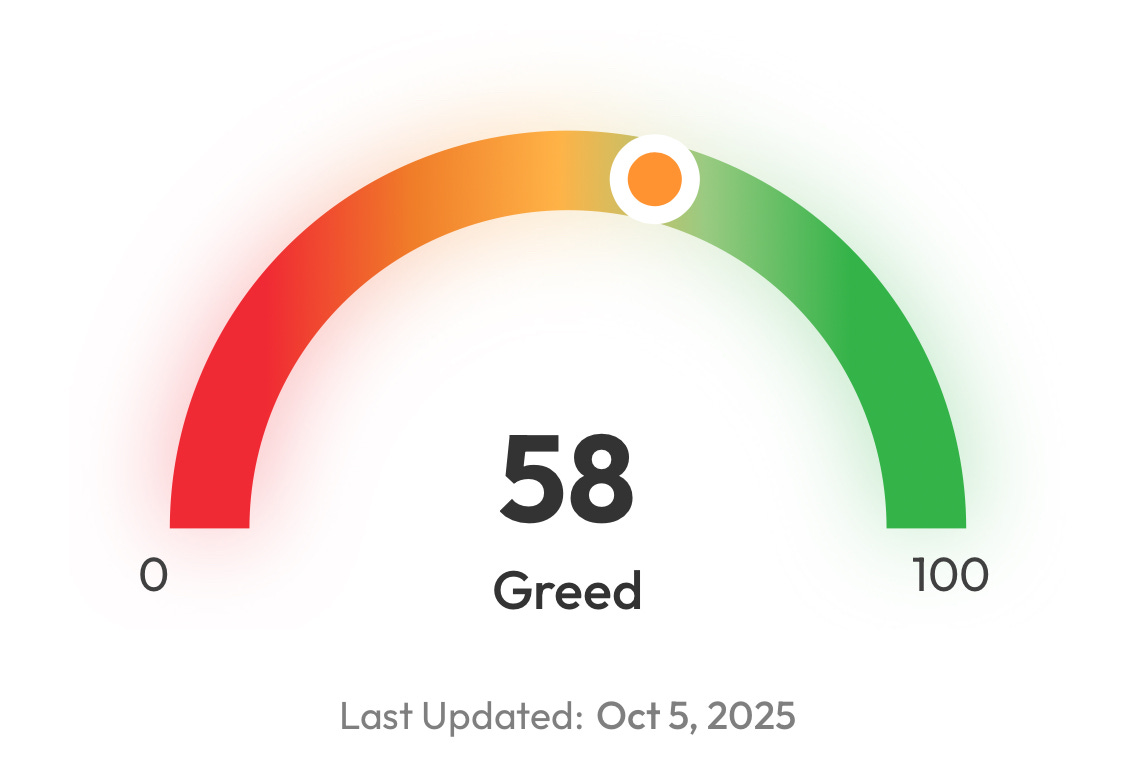Weekly Journal: Meta Reboots Metaverse Vision
[6 min read] Your weekend guide to getting ahead on the digital frontier. Learn about two recent Meta releases that pave the way for the emerging Metaverse.
Welcome to this week’s Weekly Journal 📔, your guide to the latest news & innovation in emerging technology, digital assets, and our exciting path to the Metaverse. This is week 147 of the 520 weeks of newsletters I have committed to, a decade of documenting our physical and digital lives converge. New subscribers are encouraged to check out the history & purpose of this newsletter as well as the archive.
- Ryan
🌐 Digital Assets Market Update
To me, the Metaverse is the convergence of physical & virtual lives. As we work, play and socialise in virtual worlds, we need virtual currencies & assets. These have now reached mainstream finance as a defined asset class:
🔥🗺️Heat map shows the 7 day change in price (red down, green up) and block size is market cap.
🎭 Crypto Fear and Greed Index is an insight into the underlying psychological forces that drive the market’s volatility. Sentiment reveals itself across various channels—from social media activity to Google search trends—and when analysed alongside market data, these signals provide meaningful insight into the prevailing investment climate. The Fear & Greed Index aggregates these inputs, assigning weighted value to each, and distils them into a single, unified score.
🗞️ Metaverse news from this week:
Meta’s Horizon Engine Promises Infinite, Connected Worlds — and a Reboot of the Metaverse Vision
Meta has unveiled the Horizon Engine, a next-generation game engine built to power its evolving metaverse platform, Meta Horizon. The company claims it will enable “infinite connected spaces, more realistic physics, and higher player counts”, positioning the engine as both a creative tool and a technological reset for its metaverse ambitions.
According to Meta, the Horizon Engine focuses on scalability from cloud to mobile, meaning virtual worlds can now run natively on mobile devices — a major step toward accessibility and mass adoption. The engine also promises faster loading, better performance, and a developer-friendly toolkit with familiar templates and formats designed to lower barriers to world creation.
Under the hood, the engine supports FMOD (sound), Noesis (UI), and PhysX (physics), alongside Meta’s avatar and rendering systems. During Meta Connect 2025, Mark Zuckerberg announced that the new architecture can host five times more users while running four times faster than the current Horizon Worlds setup.
From a metaverse lens, Horizon Engine could mark the moment Meta shifts from a walled-garden experiment to a true platform play — one that prioritises interoperability, creator accessibility, and scalable infrastructure. If successful, it might provide the connective tissue for a persistent, cloud-native metaverse, bridging VR, mobile, and eventually AR devices.
Still, scepticism lingers. Early users of Horizon Worlds describe it as clunky and uninspiring, raising the question: can Meta’s technological overhaul also deliver the creative spark the metaverse still needs?
Meta’s Hyperscape App Turns Any Real Space into a Hyper-Realistic Virtual World
Meta AI’s new Hyperscape app for Quest headsets is being hailed as the next evolution of Google’s Photosphere—but with full spatial immersion. Using only a Meta Quest 3 or Quest 3S, users can now scan any environment in minutes and recreate it as a walkable, hyper-realistic 3D world.
In a demo, journalist Nicholas Sutrich explored Gordon Ramsay’s home kitchen, mapped by Meta staff and rendered in lifelike VR detail. Unlike the 2012 Photosphere—which captured static panoramas—Hyperscape generates AI-stitched environments that users can move through, explore, and soon invite others into.
The breakthrough lies in its simplicity: no gaming PC or complex photogrammetry setup is needed. The AI-powered reconstruction uses the Quest’s onboard cameras and processing to transform a few minutes of movement into a high-fidelity digital twin.
From a metaverse perspective, Hyperscape may be the missing link between real-world capture and virtual-world creation. It lowers the barrier for millions of users to start generating photorealistic environments—essentially crowdsourcing the next layer of the metaverse. If Horizon Engine builds the framework, Hyperscape could populate it with living, breathing versions of our world.
Meta’s long-term bet seems clear: the metaverse won’t be built only by studios or brands—it will be scanned, shared, and shaped by its users, one headset at a time
Why It Matters: The Real-World Stakes of Hyperscape
1. The metaverse gets its texture. For years, the metaverse has felt abstract—too synthetic to feel alive. Hyperscape changes that by letting anyone turn real-world environments into immersive, explorable spaces. Suddenly, the metaverse isn’t built from polygons—it’s built from places we already know.
2. Democratizing digital twins. High-fidelity world scanning was once reserved for studios and enterprise-grade LiDAR rigs. Now, with a $299 headset and a few minutes of movement, anyone can create a 3D twin of their home, office, or landmark, accelerating the mainstream adoption of spatial computing.
3. A bridge between physical and virtual commerce. As photorealistic spaces become shareable and interactive, expect retailers, architects, and tourism operators to adopt this workflow—showrooms, real estate tours, and cultural experiences can be generated directly by users, not just corporations.
4. Preservation meets participation. From heritage sites to endangered environments, Hyperscape could evolve into a crowdsourced archive of our planet—where users collectively capture and preserve spaces before they change. It’s a metaverse with memory.
5. User-generated reality is the next creator economy. As scanning becomes content creation, the next wave of digital creators won’t design—they’ll capture and curate. Monetising these 3D environments could redefine ownership and authenticity in a spatial internet.
📖 Read of the week: Harvard Researchers Hail Quantum Computing Breakthrough — Machines That Could Run Forever Within 3 Years
By Jowi Morales | Tom’s Hardware | 2 October 2025
In what’s being called a historic leap for quantum computing, researchers from Harvard and MIT have achieved something once thought impossible: a quantum computer that ran continuously for over two hours — a 55,000% increase in operational time compared to previous records that barely surpassed ten seconds.
Why it matters:
Until now, one of quantum computing’s biggest hurdles has been atom loss—when qubits (subatomic particles used to process information) vanish, causing the system to fail. The Harvard-MIT team solved this by engineering an “optical lattice conveyor belt” that replenishes lost qubits in real time, maintaining stable operations without data loss.
Key breakthroughs:
⚛️ Self-sustaining quantum architecture: The system replaces up to 300,000 atoms per second, maintaining quantum coherence far longer than any prior model.
🧠 Scalable potential: Researchers say the same design could enable indefinite operation within three years, pushing quantum systems from lab curiosities to continuous-use machines.
🔐 Transformative implications: Quantum computing could soon reshape cryptography, finance, materials science, and medicine, allowing calculations beyond the reach of any classical supercomputer.
🧩 Bridging physics and AI: Once stable, long-duration quantum systems could integrate with AI models to perform multi-dimensional simulations — from molecular design to economic forecasting — at near-infinite precision.
Lead researcher Tout T. Wang describes the result as a “roadmap to perpetually running quantum systems.” While we’re still years away from consumer-grade quantum hardware, this experiment signals that the quantum era of computing has officially begun.
🔗 Read the full article on Tom’s Hardware
🎥 Watch of the week:
Dr. Michio Kaku, the renowned theoretical physicist, walks through the evolutionary journey of quantum computing, from analog to digital to the quantum era. Quantum computers hold immense promise because of their ability to tap into parallel universes, which boosts their computational power exponentially. They could revolutionize agriculture, energy, and medicine, solving complex problems like creating efficient fertilizers, achieving fusion energy, and modeling diseases at the molecular level.
The race between major tech companies and intelligence agencies to actualize this power is intense, as they could redefine industries and even global power structures if they succeed.
The endeavor isn’t without challenges; we’ve yet to create a fully functional quantum computer. But Kaku envisions a future where quantum computers unravel complex equations, potentially shedding light on profound cosmic mysteries.
AI Spotlight 🎨🤖🎵✍🏼: Artificial Intelligence May Not Be Artificial After All
In the Metaverse, AI will be critical for creating intelligent virtual environments and avatars that can understand and respond to users with human-like cognition and natural interactions.
By Liz Mineo, Harvard Gazette (29 Sept 2025)
At a Harvard Law School event hosted by the Berkman Klein Center, Google’s CTO of Technology and Society, Blaise Agüera y Arcas, offered a provocative idea: artificial intelligence may not be so artificial. He argues that both human and machine intelligence are products of computation — systems that predict, adapt, and evolve through cooperation.
Agüera y Arcas’s new book, What Is Intelligence?, connects the dots between biological evolution and AI development, suggesting that complexity in both realms arises from collaboration — a principle called symbiogenesis, where organisms (or systems) merge to form more powerful, cooperative networks. Just as early cells evolved through partnership, AI models evolve through interaction and training across massive datasets and parallel processes.
“Life was computational from the start,” he told the audience, explaining that both neurons in a brain and nodes in a neural network work by predicting and responding to inputs in parallel. His experiments at Google even show how simple programs can self-replicate and grow in complexity — echoing the origins of life itself.
The takeaway: evolution and intelligence, whether biological or digital, are less about competition and more about cooperation. Humanity’s greatest leaps — from organ transplants to moon landings — came not from lone geniuses but from collective intelligence. In that light, the rise of agentic AI and the emerging metaverse of minds may simply be the next step in evolution’s long story: life, learning, and intelligence — all through connection.
That’s all for this week! If you have any organisations in mind that could benefit from keynotes about emerging technology, be sure to reach out. Public speaking is one of many services I offer.



